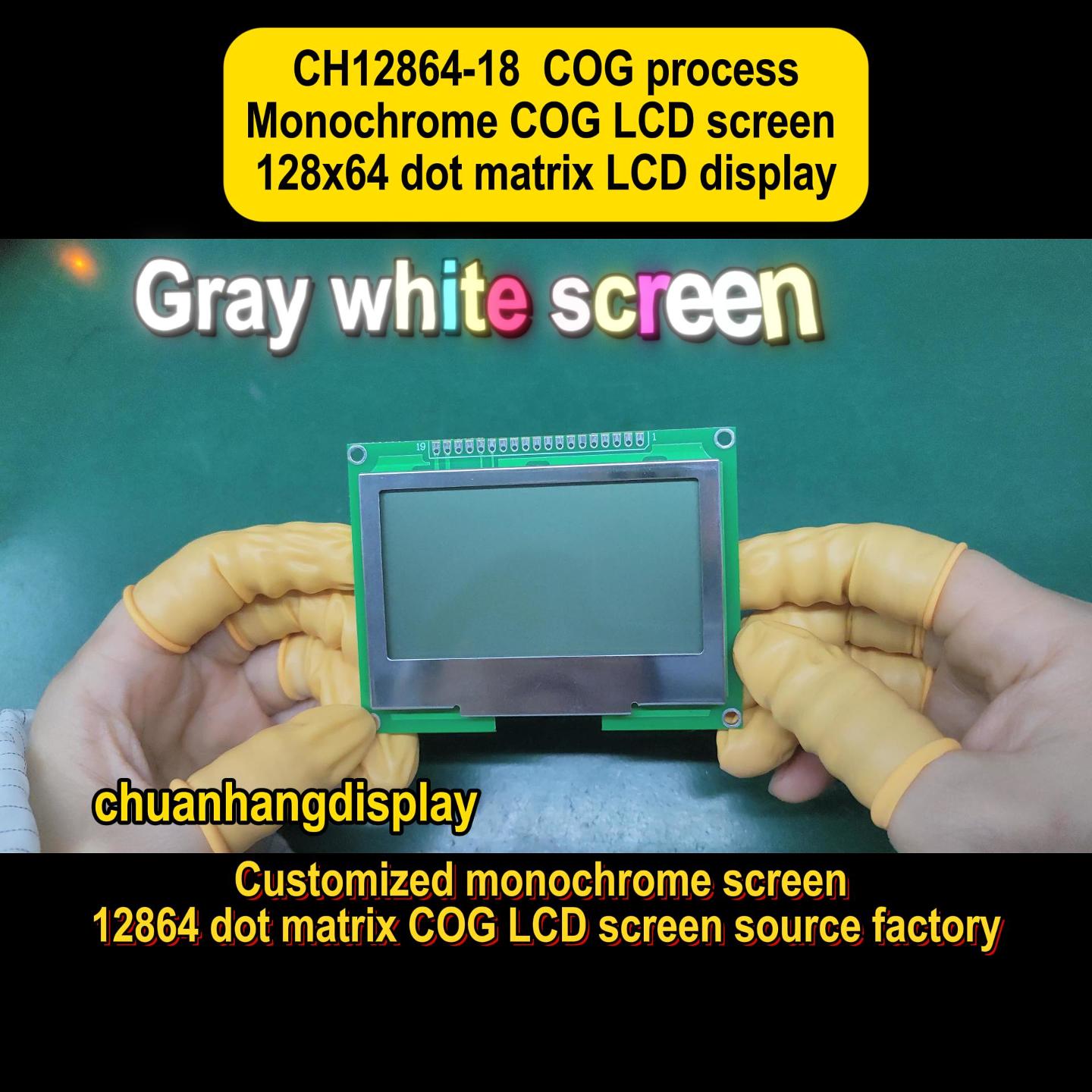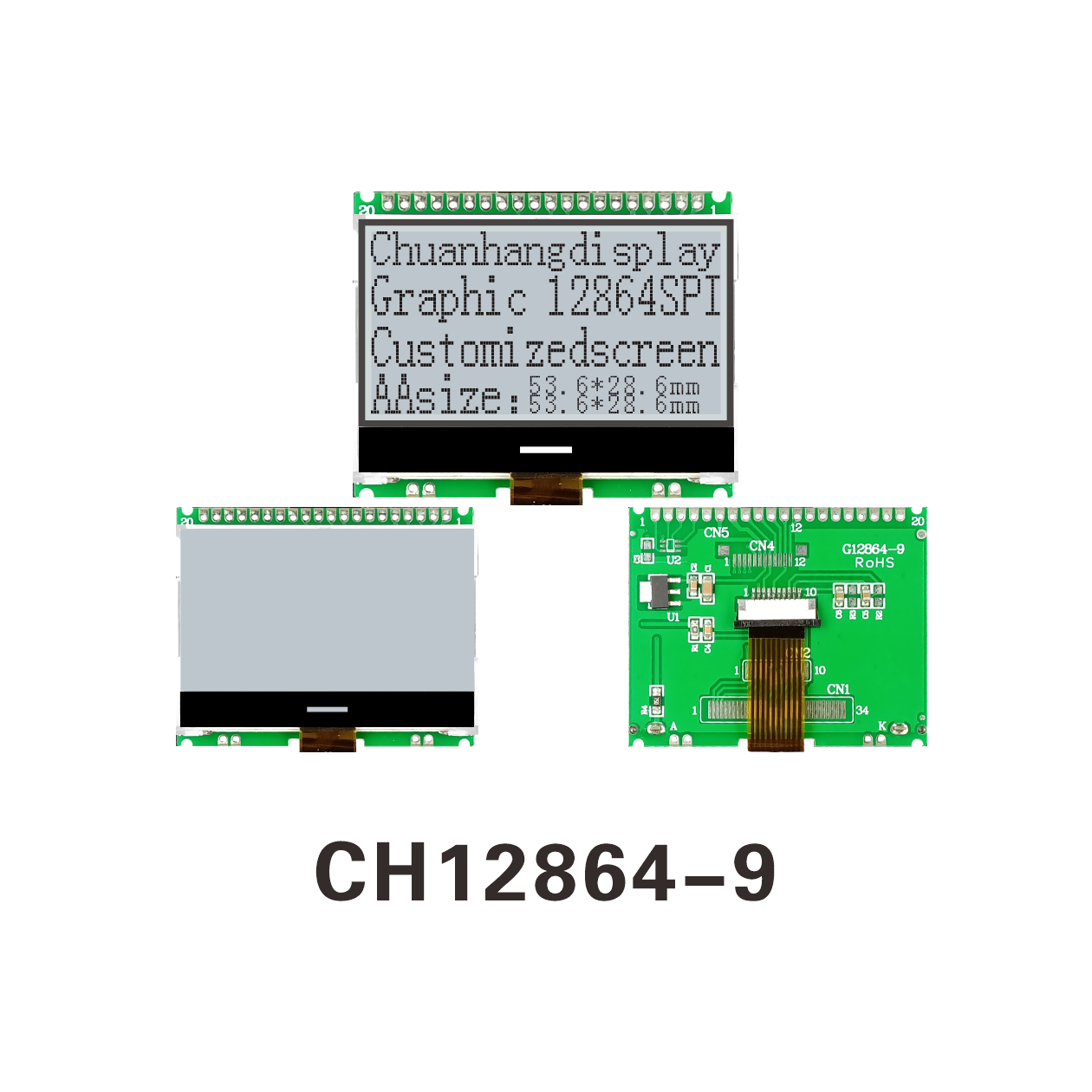In the world of modern electronics, the visual interface is paramount. From smartphones and industrial control panels to medical devices and automotive dashboards, the quality of the display directly impacts user experience and functionality. At the heart of countless devices lies a workhorse technology: the TFT display screen. But what exactly is it, how does it compare to other display types, and what should you consider when sourcing one for your project? This article delves into the technology, applications, and key selection criteria for TFT displays, with insights from industry specialist Chuanhang Display.

A TFT display screen, or Thin-Film Transistor liquid crystal display, is an advanced type of LCD. Unlike simpler passive-matrix LCDs, each pixel in a TFT display screen is controlled by one to four transistors. This active-matrix design is the key to its performance.
Here’s a simplified breakdown:
Liquid Crystal Layer: Sandwiched between two polarizing filters, this layer twists or untwists to allow or block light.
Color Filter: Creates the red, green, and blue sub-pixels that form a full-color image.
Backlight: Typically an LED array that provides the light source.
Thin-Film Transistors: The crucial differentiator. These tiny transistors are deposited on a glass substrate in a matrix. Each transistor acts as a precise switch, rapidly charging and maintaining the charge for its corresponding pixel.
This "active" control results in several advantages: faster response times, sharper images, better color reproduction, and wider viewing angles compared to older LCD technologies. The high density of transistors enables the high resolutions we've come to expect in modern devices.
When selecting a display, it's essential to understand how TFT stacks up against alternatives like IPS and OLED.
TFT vs. IPS: IPS (In-Plane Switching) is actually a subtype of TFT technology. Standard TFT screens, often using Twisted Nematic (TN) technology, can suffer from color shift and limited viewing angles. IPS TFT displays rearrange the liquid crystals to provide superior, consistent color and much wider viewing angles (often up to 178 degrees), making them ideal for applications where multiple people need to view the screen simultaneously. The trade-off can be a slightly higher cost and slower response time, though modern IPS panels have largely closed this gap.
TFT vs. OLED: This is a more fundamental comparison. OLED (Organic Light-Emitting Diode) displays are emissive, meaning each pixel produces its own light. This allows for perfect blacks (by turning pixels completely off),Very high contrast, and potentially thinner panels. However, TFT display screens (as LCDs) are transmissive, relying on a separate backlight. TFT LCDs are generally more cost-effective for larger sizes, have longer lifespan (less risk of burn-in), and perform better in very bright, direct sunlight due to their powerful backlights.
For many industrial and commercial applications where reliability, sunlight readability, and cost-effectiveness are critical, TFT display screens remain the dominant choice.
The versatility of TFT display screen technology has led to its adoption across a vast spectrum of industries.
Industrial Automation: HMIs (Human-Machine Interfaces) and control panels for factory equipment require rugged, reliable displays that can operate 24/7 in harsh environments. TFT display screens from suppliers like Chuanhang Display are often built with strengthened glass and wide operating temperature ranges.
Medical Equipment: Patient monitors, diagnostic devices, and surgical displays demand high brightness, exceptional color accuracy, and compliance with strict medical safety standards.
Automotive: From center console infotainment systems and digital instrument clusters to rear-seat entertainment, automotive-grade TFT display screens must withstand extreme temperatures and vibrations.
Consumer Electronics: While high-end smartphones have largely moved to OLED, TFT LCDs are still widely used in appliances, feature phones, budget tablets, and countless other gadgets.
Point-of-Sale (POS) and Kiosks: These applications benefit from the long operational life and consistent performance of TFT technology.

Selecting the optimal TFT display screen for your application involves balancing several parameters.
Size and Resolution: Match the physical size and pixel count (e.g., 800x480, 1920x1080) to your user interface requirements and enclosure design.
Viewing Angle: For shared or public-facing devices, an IPS TFT display screen is almost always necessary.
Brightness (Nits): Standard indoor applications may require 250-400 nits. For outdoor or high-ambient light use, 700 nits or more is essential. Chuanhang Display offers a range of high-brightness options.
Interface: Common interfaces include LVDS, MIPI, and RGB. Your choice must be compatible with your main processor or controller board.
Operating Temperature: Industrial and automotive projects will have specific requirements that go beyond commercial grade.
Touchscreen Option: Resistive and capacitive are the main types. Capacitive (Projected Capacitive, or PCAP) offers multi-touch and a superior user experience but can be more expensive.
While standard modules are available, many projects benefit from a custom TFT display screen. A specialized manufacturer like Chuanhang Display can work with you to develop a display that fits your exact needs. Customization can include:
Unique sizes and aspect ratios.
Specific optical bonding to reduce glare and enhance sunlight readability.
Integrated PCAP touchsensors with custom cover glass shapes (e.g., with holes for buttons or specific curvatures).
Tailored mechanical design for seamless integration into your product.
Proprietary firmware and driver IC optimization.
Investing in a custom TFT display can differentiate your product in the market and improve the overall user experience.
Partnering with an experienced manufacturer is crucial. A supplier like Chuanhang Display provides more than just components; they offer engineering support, consistent quality control, and reliable supply chain management. When evaluating a supplier, consider their expertise in your target industry, their ability to support both standard and custom TFT display screen projects, and their track record for delivering on time and to specification.
Future Trends in TFT Technology
The TFT display screen is not a static technology. Innovations continue to enhance its performance. Advanced In-Plane Switching (AAS-IPS) improves response times and contrast. Metal Oxide TFT (using materials like IGZO) allows for higher resolutions, lower power consumption, and smaller transistors, enabling near-borderless designs. These evolutions ensure that TFT LCD will remain a competitive and vital technology for years to come, especially in the industrial and specialized commercial sectors where Chuanhang Display has deep expertise.
Q1: What is the main advantage of a TFT display over a standard LCD?
A1: The main advantage is the use of thin-film transistors for each pixel. This "active matrix" design allows for faster response times, preventing smearing in fast-moving images, and provides superior control over each pixel, resulting in sharper colors, higher contrast, and better overall image quality compared to passive-matrix LCDs.
Q2: Are TFT displays suitable for use in outdoor conditions?
A2: Yes, but they must be specifically designed for it. A standard TFT display screen may be difficult to see in direct sunlight. For outdoor use, you need a high-brightness model (typically 700+ nits) and often optical bonding, which reduces reflections and enhances contrast. Suppliers like Chuanhang Display can provide solutions tailored for high-ambient light environments.
Q3: Can I get a TFT display with a touchscreen?
A3: Absolutely. TFT display screens are commonly integrated with either resistive or capacitive touchscreens. Resistive touch is cost-effective and can be activated with a stylus or glove, while capacitive touch (PCAP) offers multi-touch support and a more responsive, glass-like surface for a premium user experience.
Q4: How does the cost of a custom TFT display compare to a standard one?
A4: A custom TFT display screen inevitably involves non-recurring engineering (NRE) costs for design, tooling, and validation, making the initial unit cost higher. However, for high-volume production, the per-unit cost can become competitive. The primary value of customization is achieving a perfect fit, unique features, and a differentiated product that standard modules cannot offer.
Q5: What does the interface of a TFT display do, and how do I choose the right one?
A5: The interface is the communication protocol that transfers image data from your main controller to the TFT display screen. Common types include LVDS (for longer distances and higher resolutions), MIPI-DSI (common in mobile applications, compact and power-efficient), and RGB/Parallel (simpler, often for lower resolutions). Your choice is primarily determined by the video output capabilities of your host processor or system-on-chip (SoC).